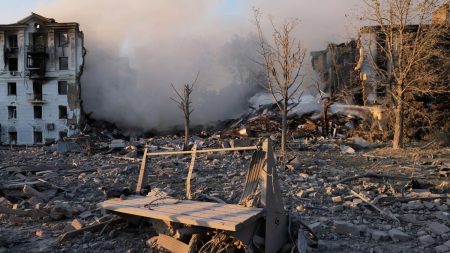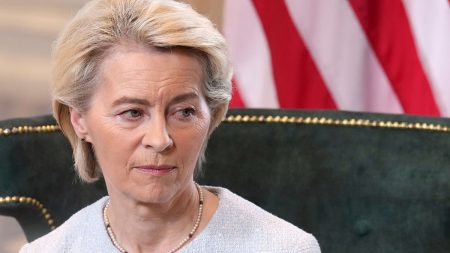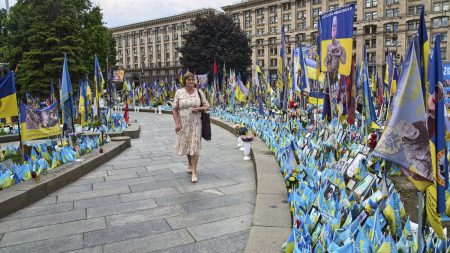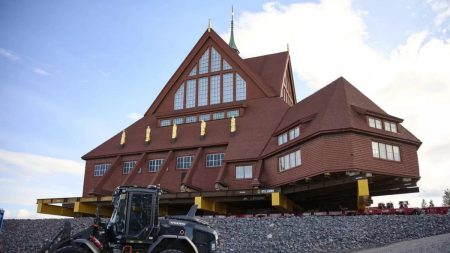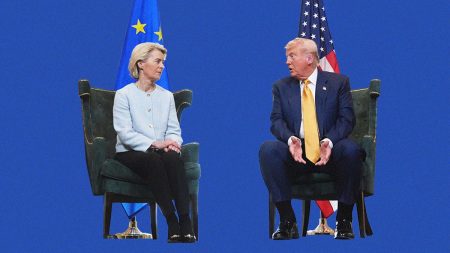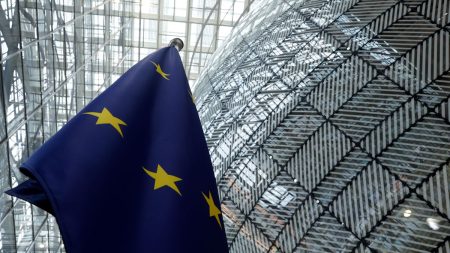The heart of Serbia is pulsing with dissent as weeks of student-led protests, the most significant in decades, continue to challenge President Aleksandar Vučić’s authority. These demonstrations, sparked by a tragic canopy collapse at the Novi Sad railway station that claimed 15 lives, have evolved into a larger condemnation of alleged systemic corruption within the government and its handling of major infrastructure projects. Hundreds of students marched 80 kilometers from Belgrade to Novi Sad, their footsteps echoing the growing frustration and demand for accountability. Upon arrival, they were greeted by thousands of local residents, solidifying the widespread public support for their cause. Their plan to blockade three Danube River bridges serves as a potent symbol of their resolve and a direct challenge to the status quo.
The students’ central grievance revolves around the perceived nexus between corruption and the deadly accident. They argue that the collapse, occurring three months prior to the march, highlights a pattern of negligence in large-scale infrastructure projects, particularly those involving foreign companies. The renovation of the Novi Sad railway station, undertaken by Chinese state companies, has become a focal point of their criticism. The students allege that the project suffered from inadequate oversight, disregard for safety regulations, and a general lack of accountability, all stemming from a culture of corruption they believe permeates the government. Their persistent protests underscore a deep-seated distrust in the authorities and their ability to ensure public safety.
The student-led movement has already achieved a significant victory with the resignation of Prime Minister Miloš Vučević. This concession, while substantial, hasn’t fully satisfied the protesters. Their demands extend beyond a simple change in leadership. They seek a fundamental shift in the political landscape, one that addresses the root causes of corruption and ensures transparency and accountability in government operations. The students envision a Serbia free from the grip of entrenched corruption, where public safety is prioritized, and infrastructure projects are executed with integrity. Their continued mobilization signals a determination to see these demands met, regardless of the challenges they may face.
President Vučić and his ruling Serbian Progressive Party (SNS) find themselves under intense scrutiny, accused of eroding democratic freedoms and consolidating power despite promises of European Union integration. The accusations of authoritarian tendencies and the suppression of dissent further fuel public discontent. The students, along with a growing segment of the Serbian population, perceive Vučić’s leadership as a threat to democratic principles and the rule of law. This perception is reinforced by the government’s handling of the Novi Sad tragedy and the perceived lack of transparency in the subsequent investigation.
The legal proceedings surrounding the canopy collapse have done little to assuage public concerns about corruption and its influence within the government. Thirteen individuals, including a government minister and several state officials, face charges related to the incident. However, the release from detention of former construction minister Goran Vesić has cast a shadow over the investigation, raising doubts about its impartiality and fueling suspicions of political interference. This development has only deepened the protesters’ distrust of the government and strengthened their resolve to continue their demonstrations. The release of Vesić serves as a symbol of the perceived impunity enjoyed by those in power, further emphasizing the students’ call for systemic change.
The student-led protests in Serbia represent more than just a reaction to a single tragic event. They embody a broader struggle against what many perceive as a pervasive culture of corruption and a slide towards authoritarianism. The students, emboldened by public support and unwavering in their demands, are determined to reshape the political landscape of their country. Their persistent demonstrations serve as a potent reminder of the power of citizen activism and the enduring pursuit of transparency, accountability, and democratic ideals. The future of Serbia, and its relationship with the European Union, hinges on the outcome of this ongoing struggle.





